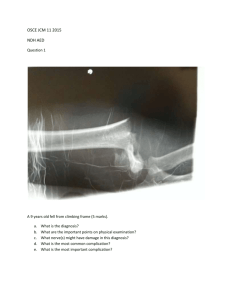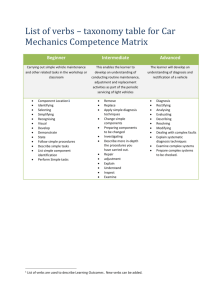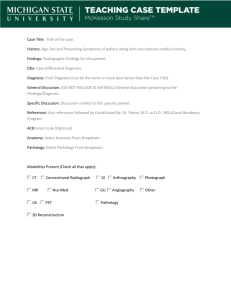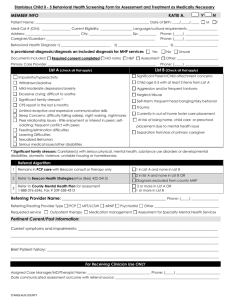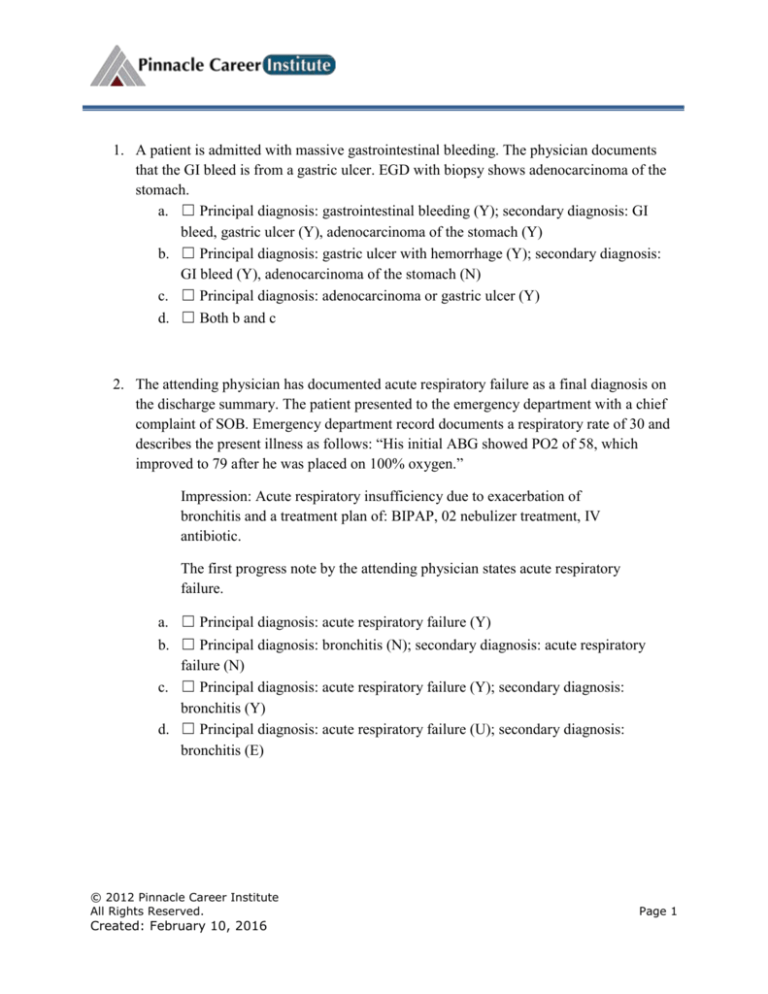
1. A patient is admitted with massive gastrointestinal bleeding. The physician documents
that the GI bleed is from a gastric ulcer. EGD with biopsy shows adenocarcinoma of the
stomach.
a. ☐ Principal diagnosis: gastrointestinal bleeding (Y); secondary diagnosis: GI
bleed, gastric ulcer (Y), adenocarcinoma of the stomach (Y)
b. ☐ Principal diagnosis: gastric ulcer with hemorrhage (Y); secondary diagnosis:
GI bleed (Y), adenocarcinoma of the stomach (N)
c. ☐ Principal diagnosis: adenocarcinoma or gastric ulcer (Y)
d. ☐ Both b and c
2. The attending physician has documented acute respiratory failure as a final diagnosis on
the discharge summary. The patient presented to the emergency department with a chief
complaint of SOB. Emergency department record documents a respiratory rate of 30 and
describes the present illness as follows: “His initial ABG showed PO2 of 58, which
improved to 79 after he was placed on 100% oxygen.”
Impression: Acute respiratory insufficiency due to exacerbation of
bronchitis and a treatment plan of: BIPAP, 02 nebulizer treatment, IV
antibiotic.
The first progress note by the attending physician states acute respiratory
failure.
a. ☐ Principal diagnosis: acute respiratory failure (Y)
b. ☐ Principal diagnosis: bronchitis (N); secondary diagnosis: acute respiratory
failure (N)
c. ☐ Principal diagnosis: acute respiratory failure (Y); secondary diagnosis:
bronchitis (Y)
d. ☐ Principal diagnosis: acute respiratory failure (U); secondary diagnosis:
bronchitis (E)
© 2012 Pinnacle Career Institute
All Rights Reserved.
Created: February 10, 2016
Page 1
3. An infant is born prematurely at 27 weeks by Cesarean section. The baby weighs 945
grams. The baby’s lungs are immature, and the baby develops respiratory distress
syndrome, requiring a 25-day hospital stay in NICU. Discharge diagnoses: extreme
immaturity, with 27-week gestation, with respiratory distress syndrome, delivered by
Cesarean section.
a. ☐ Principal diagnosis: Cesarean delivery (Y); secondary diagnosis: Respiratory
distress syndrome (N), week’s gestation (Y), weight in grams (N)
b. ☐ Principal diagnosis: Cesarean delivery (E); secondary diagnosis: Respiratory
distress syndrome (Y), extreme prematurity, weeks in gestation (Y), weight in
grams (Y)
c. ☐ Principal diagnosis: respiratory distress syndrome (E), Cesarean delivery (W),
respiratory distress syndrome (W), extreme prematurity, weeks gestation (N),
weight in grams (N)
d. ☐ Principal diagnosis: extreme prematurity, weeks gestation (E); secondary
diagnosis: weight in grams (N), respiratory distress syndrome (Y), extreme
prematurity, weeks gestation (N).
For questions 4 and 5, identify the principal diagnosis and secondary diagnoses, and assign the
appropriate POA indicator.
4. A patient is admitted to the hospital for severe abdominal pain, found to be secondary to
appendicitis. Laparoscopic appendectomy is performed. Three days after surgery, the
patient develops fever, tachycardia, leukocytosis and hypotension which is subsequently
diagnosed as sepsis.
a. Principal diagnosis: POA indicator:
b. Secondary diagnosis: POA indicator:
c. Secondary diagnosis: POA indicator:
© 2012 Pinnacle Career Institute
All Rights Reserved.
Created: February 10, 2016
Page 2
5. A patient was admitted to the hospital with an admitting diagnosis of acute hip pain.
There was no history of trauma; she stated that she simply stood up from her chair,
immediately experienced acute pain in the left leg and fell back into the chair. She has
had osteoporosis for several years and is also a known diabetic. An X-ray revealed a
fracture of the lower third of the shaft of the femur. A routine preoperative chest X-ray
showed a few strands of atelectasis and a small cloudy area that may have represented
mild pleural effusion. A cast was applied to the leg to immobilize the fracture. Her blood
sugars were monitored and remained normal throughout the stay. The physician
documented spontaneous fracture secondary to osteoporosis.
a. Principal diagnosis: POA indicator:
b. Secondary diagnosis: POA indicator:
c. Secondary diagnosis: POA indicator:
© 2012 Pinnacle Career Institute
All Rights Reserved.
Created: February 10, 2016
Page 3





